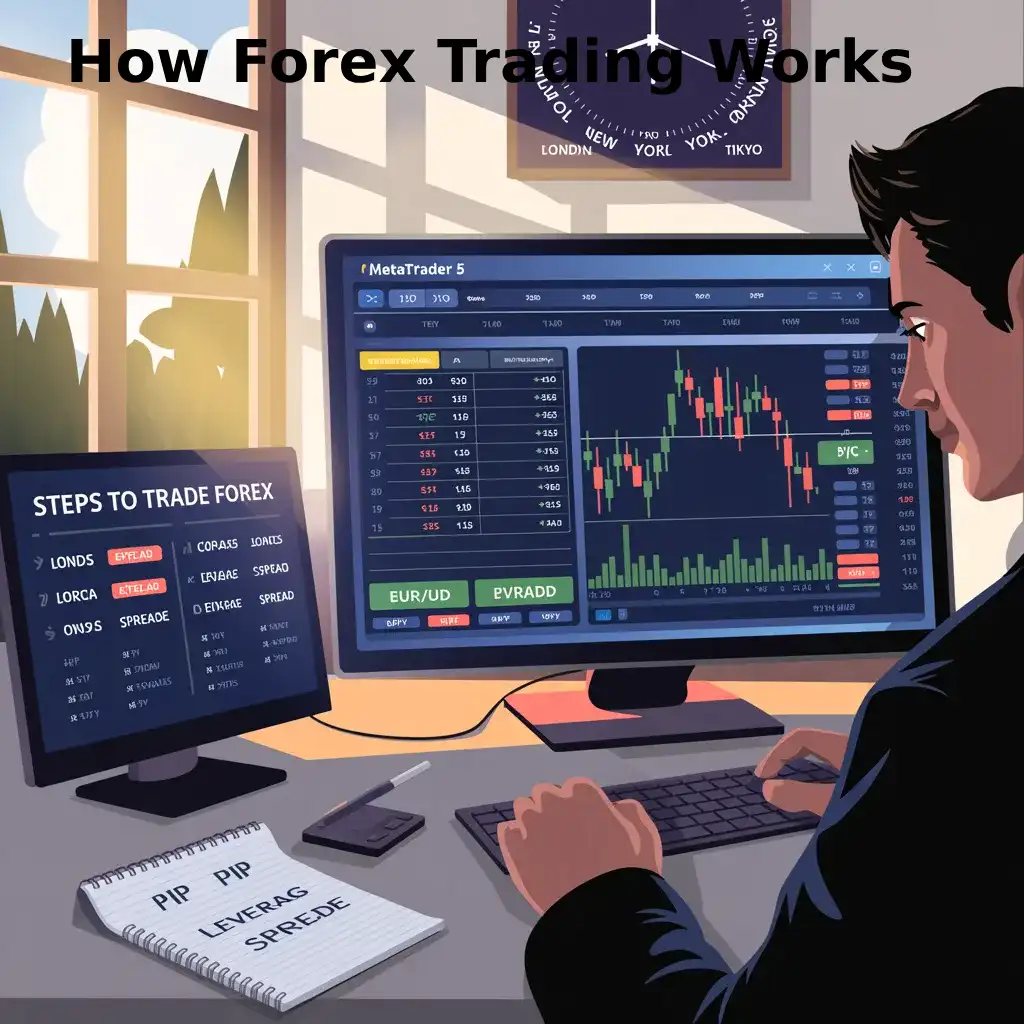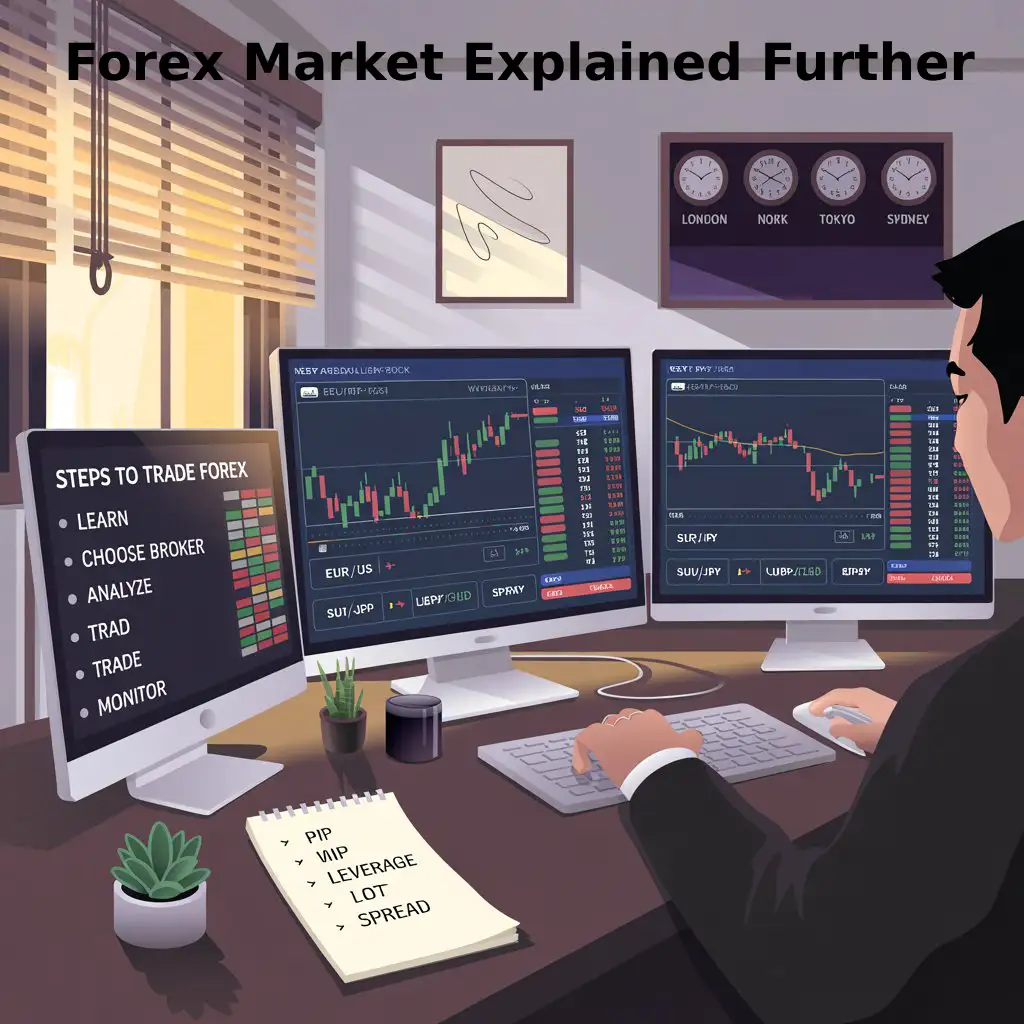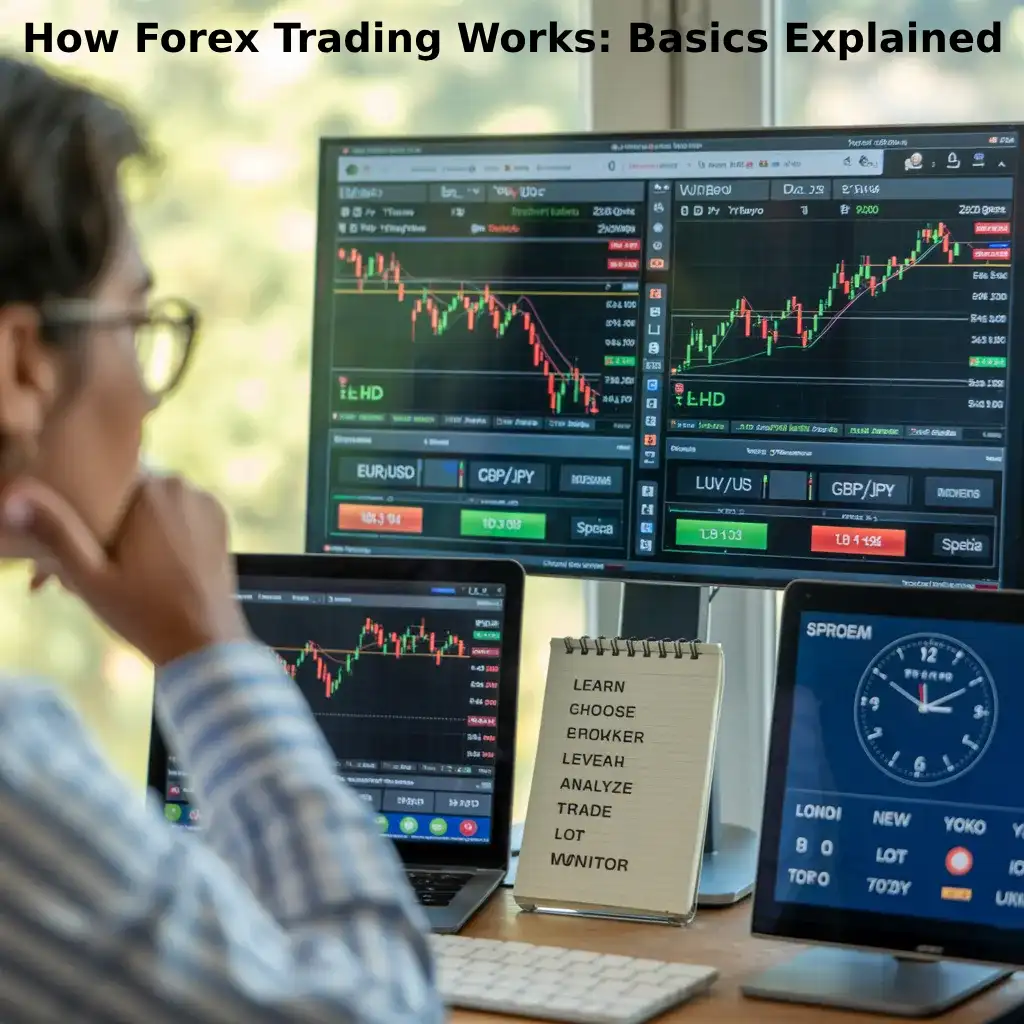Both new and experienced traders have made forex trading popular, giving it the name foreign exchange trading. Being simple to access, likely to make a profit and present globally are all reasons why it appeals to investors. If you’re entering this world for the first time, you might be asking what forex trading is and how it happens. In this article, you’ll learn about forex trading, its rules, how to make trades and how to start for yourself.
If you’re interested, still learning or want to know the basics of how forex trading works, you will find friendly explanations here. When you finish this article, you will know enough to move forward in forex trading.
What Is Forex Trading?
Forex trading refers to buying and selling currencies with the main goal of making money. About $7 trillion is traded on the forex market daily, making it one of the most liquid markets globally. Forex is unlike stock trading which takes place on big organized exchanges. Rather, it happens every trading day except weekends, on the over-the-counter market.
As an example, when you buy EUR while abroad, it means you have taken part in the forex market. Unlike the stock market, Forex trading makes profits by following changes in price. People who participate in trading decide whether a currency will increase or decrease in value and place their trades based on that.
Important Features of the Foreign Exchange Market
You begin to understand forex when you know its key differences from other financial markets.
Decentralized Nature
The forex market covers the world and traders interact using networks of banks, institutions and individuals.
When you trade Forex, you look at pairs such as EUR/USD (Euro/US Dollar) or GBP/JPY (British Pound/Japanese Yen). Every pair features a main currency listed before a quote currency. For instance, in trading EUR/USD, the EUR is listed first and the USD is listed second.
High Liquidity
Due to how much is traded daily, the forex market is considered very liquid. Thanks to this feature, it’s easy to buy or sell at an unchanged price.
24-Hour Trading
You can trade the market any time, 24 hours a day, thanks to sessions in London, New York, Tokyo and Sydney. It gives anyone across the world an opportunity to trade at all times.

How Forex Trading Works
To grasp how forex trading works step by step, it helps to break down the process into its core components:
Step 1: Learn the Basics
To trade smartly, investors should learn about currency pairs, the differences between the bid and ask prices (called spreads) and the idea of leverage. To succeed in forex trading over time, it is important to first understand what it means.
For example:
- Within major pairs, you find currencies tied to the USD, for example EUR/USD and GBP/USD.
- You can find major pairs on the charts, since they include the GBP and JPY, while USD is missing.
- Exotic pairs are made up of currencies from developing nations.
Step 2: Pick a Spot to Trade
Before you can trade, get yourself a forex broker and a trading platform. These programs are standing as two of the most popular: MetaTrader 4 (MT4) and MetaTrader 5 (MT5). Using these platforms, you can see charts, order assets and watch your trades live.
Step 3: Open and Fund Your Account
Once you’ve chosen a broker, open a trading account and make an initial deposit. Most brokers offer a demo account where you can practice without risking real money.
Step 4: Analyze the Market
Market analysis is a critical step in how to understand forex trading. Traders use two main methods:
- Fundamental Analysis involves studying economic indicators, news, and geopolitical events that might impact currency values.
- Technical Analysis focuses on price charts and patterns using tools like moving averages or trendlines.
Step 5: Execute Trades
With your analysis in hand, you’re ready to place trades. You’ll do this by:
- Buying (Going Long) when you believe the base currency will strengthen against the quote currency.
- Selling (Going Short) when you think the base currency will weaken.
For instance, if you predict EUR will strengthen against USD, you’d buy EUR/USD. If EUR drops in value, you’d sell the pair to close the trade.
Step 6: Risk Management
Risk management is crucial to protect your capital. Tools like stop-loss orders (to limit potential losses) and take-profit orders (to lock in gains) are essential.
If you wanted to get tools in very low prices, visit our website Greg’s Forex Store.
Step 7: Monitor and Adjust
Forex trading isn’t static. Monitor your trades constantly and make adjustments based on market conditions.
Step 8: Close Your Positions
When you achieve your desired profit (or reach your loss limit), close your positions to finalize the trade.
How to Start Forex Trading Successfully
Now we’ve explained forex trading in details, here is a quick tip on how to start successfully:
- Educate Yourself
- Learn by signing up for some courses, watching helpful videos and reading guides.
- Pick a Broker You Can Trust
- Select brokers that follow regulations, earn you lower spreads and are easy to use on their platforms.
- Sign up for a Demo Account and practice there first.
- Trade practice funds before you decide to use real money.
- Start Small
- Start with just a little money and avoid risky trades. So, your mistakes are smaller as you discover more about trading.
- Make a Plan
- Traders who do well use strategies that fit their own purposes and how much risk they are able to handle. Some strategies that fit this include those that copy trends and those that scalp the market.
- Keep Learning
- Since the forex market changes all the time, you should always be ready to learn and change.
Understanding Forex Market Terminology
Here’s a quick glossary of terms to help you understand forex trading better:
- Pip: The smallest price movement in a currency pair.
- Lot: A standardized unit of currency you trade (e.g., 100,000 units for a standard lot).
- Leverage: Using borrowed funds to increase trade size.
- Margin: The collateral required by your broker to open a trade.

Forex Market Explained Further
The forex market operates with key players such as central banks, commercial banks, financial institutions, corporations, and retail traders. Each plays a unique role in maintaining market liquidity and influencing prices.
For example:
- Central banks can move markets with policy changes and interventions.
- Retail traders, often operating from home, leverage platforms to speculate on currency pairs.
Mistakes Beginners Should Avoid
Starting in the forex market can be daunting, but knowing what to avoid can save you a lot of money and stress:
- Overusing Leverage
While leverage can amplify profits, it also magnifies losses. Be cautious with high-leverage accounts. - Neglecting Risk Management
Always use stop-loss orders to protect your investments. - Revenge Trading
Chasing losses often leads to poor decisions and more losses. Maintain a cool head.
Tools and Resources to Get Started
To succeed in forex trading, leverage various tools:
- Economic Calendars
Track important events like interest rate decisions and employment reports. - Charting Software
Use tools like TradingView or MT5 for detailed analysis. - Forex Forums
Learn from experienced traders by participating in online communities.
Final Thoughts
With Forex trading come great possibilities, but you need dedication, knowledge and a planned approach. Knowing about forex trading and its mechanics is just the first thing you need to learn. To make the most of the forex market, follow a planned routine, exercise your capabilities often and focus on risk management.
Congratulations on finishing the description of forex; you’re now ready to take additional action. Open a demo to get familiar with things, start your studies and then dive into what could be one of the best financial opportunities available. Happy trading!



